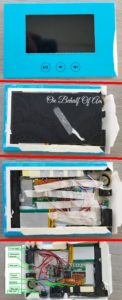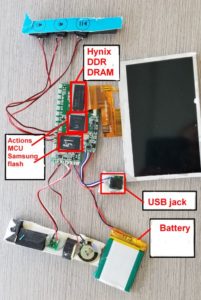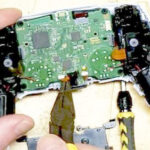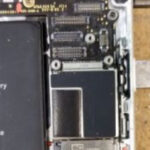For around $60, you can send a greeting card that incorporates a video. When the recipient opens the card, it can automatically 
We recently tore apart one of these cards to get an idea of how they go together. Our first discovery was the reason for the $60 price tag. If that seems a bit rich, it is because of what is apparently a lot of manual-assembly involved in the card. Removing the paper backing reveals circuit components glued to the card, probably by hand. Masking tape holds the wiring down so everything fits in the roughly 3/8-in-thick cavity holding the electronics.
The globs of glue all seem to be applied manually. Foam strips are glued around the edge of the cavity to give it a rectangular 
All the switches, the loudspeaker, the USB jack, and the battery use discrete wiring back to the PCB. Whereas the card itself seems to be hand-assembled, the PCB and the wire solder connections on it all seem to be done via automated methods. The PCB holds three main chips. One is a Hynix Semiconductor 256-Mb DDR SDRAM, the second is a Samsung flash memory chip, and the third is a processor labeled V100 from Actions Semiconductor Co. in China. There’s no description of the V100 processor on the Actions web site, but judging by other processors the company offers, it is probably based around some kind of ARM Cortex core.
And that’s about it for the video greeting card. Simple electronics, but credit the creators for envisioning how to squeeze the necessary components into a greeting-card format.






Leave a Reply